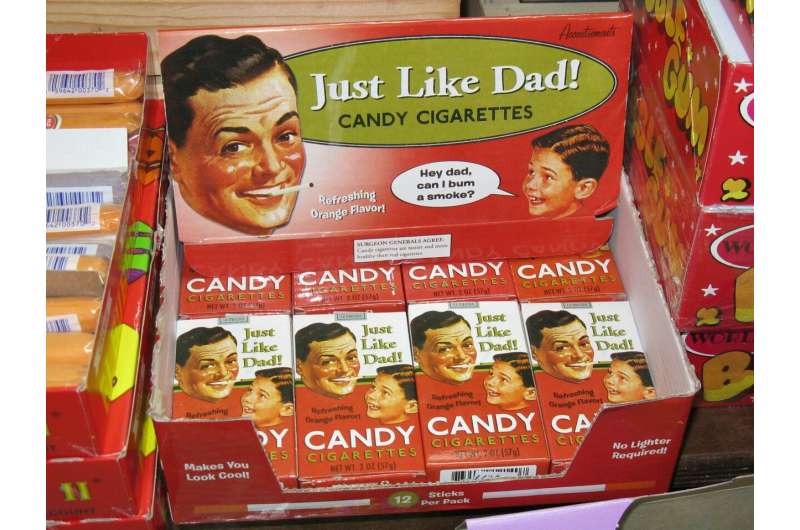This article has been reviewed according to Science X's editorial process and policies. Editors have highlighted the following attributes while ensuring the content's credibility:
fact-checked
peer-reviewed publication
trusted source
proofread
Candy tobacco imitation products availability and marketing linked to children

Childhood use of candy cigarettes, which are fake cigarettes made out of sugar, is associated with cigarette use among users, and yet there has been no research into the availability of these products or how they are currently being marketed. In a recent study led by UNC undergraduate student Dov Bearman with co-authors and mentors from the UNC Tobacco Prevention and Evaluation Program (TPEP), researchers set out to fill this gap by performing a content analysis of all candy tobacco imitation products available for online purchase in the United States.
The research is published in the journal Nicotine and Tobacco Research.
Using Google and retail websites, the researchers identified 66 unique candy tobacco imitation products available for purchase. The most popular of these products, by far, were candy cigars, which made up 59% of all identified candy tobacco imitation products. There were several more products that were identified outside of cigars, including cigarettes, various candy pipes, and candy chewing tobacco. With several major retailers, including Walmart and Amazon, carrying the products and thousands of overwhelmingly positive reviews, it is evident that the products are not just a candy of the past.
Although the availability of candy tobacco imitation products was surprising to the researchers, the way in which the candy products were marketed was the biggest surprise. Decorated with animals, sports cartoons, and vibrant colors, many of the products appeared to be marketed to children. The researchers created a set of 3 criteria to analyze whether the packaging was appealing to youth: whether human or nonhuman creatures were present on the packaging, whether the packaging contained text indicating flavor, and whether the packaging included three or more colors.
Through their analysis, the researchers identified that 75% of candy tobacco imitation products that had packaging design available had content that appealed to youth. Given the link between the use of candy tobacco imitation products and the likelihood of smoking later in life, this number was not only shocking but extremely concerning. The abundance and accessibility of candy tobacco imitation products on the internet, along with their marketing towards youth, has the potential to exacerbate the public health crisis that is the smoking of tobacco.
Family Medicine faculty and staff Sarah D. Kowitt, Ph.D., Sonia Clark, MHA, and Adam Goldstein, MD, MPH, helped author the study and often mentor young researchers in studying tobacco prevention. Bearman also credits Dr. Jonathan D. Klein and Tadhg J. Sheeran in completing this paper.
More information: Dov S Bearman et al, Analysis of Candy Tobacco Imitation Products Available Online in the United States, Nicotine and Tobacco Research (2024). DOI: 10.1093/ntr/ntae055





















